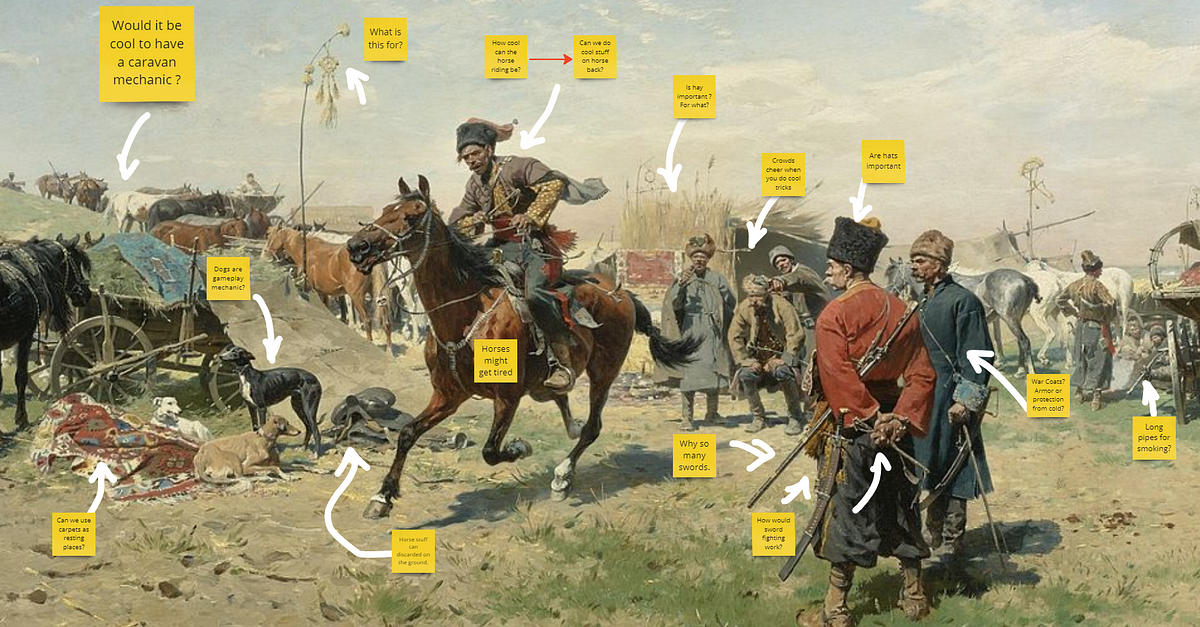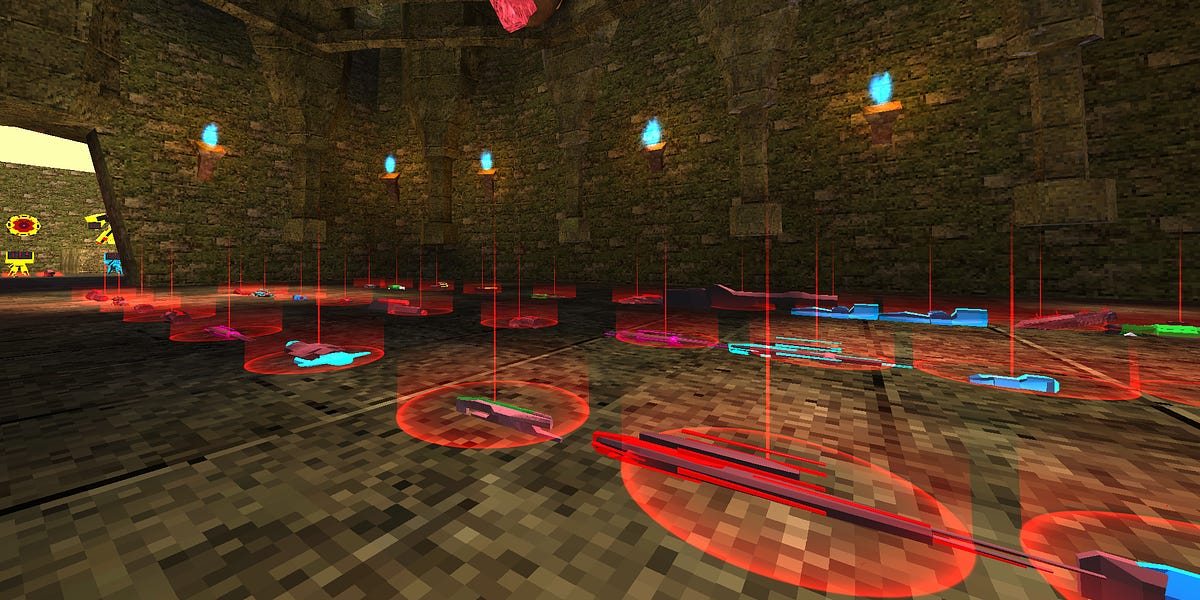- Signposted
- Posts
- Signposted #7
Signposted #7
Featuring Battle Pass Progression & the Best of Game Design
Currently playing: Starfield
Hey Designer,
Welcome to issue #7 of Signposted!
In this issue we’ll be diving a little deeper into battle pass progression.
In the best of series we’ve got a fantastic lineup. Luliu-Cosmin Oniscu (Assassin’s Creed and Watch Dogs) kicks us off by discussing designing a game’s world. In the best of video we have my pick of the issue, Kevin Regamey (Tunic, Celeste, Darkest Dungeon) discusses the sound design of Tunic. In the best of audio is a new podcast, The Game UX Podcast, where the editors discuss an emerging style of game design, data driven design, and some of the pitfalls of working with data.
Last but not least, the results of last issues community poll are in. We have a tie between Starfield and Baldur’s Gate 3! I’ll be starting Starfield tonight, with Baldur’s Gate 3 in December.
Let’s get into it!
Bi-Weekly Analysis
Let's Talk Battle Passes - Part 3 Difficulty to Progress
By Scott Fine
Game progression is something often overlooked, even more so in post launch content. But doing so can have a crippling effect on your player base as players get discouraged from a slow progression and churn. In this article we’re going to break down Halo Infinite’s Season 1 battle pass and discuss some of the tricks they used to handle different player types.
As per usual after the link to the full article is a quick breakdown of the most important points.
Quick Takeaway:
In our example players gain XP and use it to level up their battle pass.
Useful terms:
Power Gamer - a gamer who maximizes their rewards per time. Also known as a grinder, or the bane of the existence of every economy designer. To be fair, most economy designers are power gamers.

XP can come from various sources but most frequently from gameplay or missions based around gameplay.
Halo Infinite gives out XP for completing missions
The daily mission never runs out but the rewards depreciate after every completion
Daily missions XP bonus resets after 24 hours back up to 300 XP

Daily Mission Match 1: 300 XP
Daily Mission Match 2: 200 XP
Daily Mission Match 3: 200 XP
Daily Mission Match 4: 200 XP
Daily Mission Match 5: 100 XP
Daily Mission Match 6: 100 XP
Daily Mission Match 7+: 50 XP
This is an excellent strategy to reel in power gamers without harming the average gamer’s experience.
It’s important to reel in power gamers or they will complete the battle pass too quickly and quit the game once they can no longer progress.
Let’s make some additional assumptions going forward so we can plot out some estimates:
A single match takes 10-12 minutes
The total XP to complete the battle pass is 100,000 XP
One Level is 1,000 XP
The player has 3 months to complete the battle pass
A weekly mission pays out 200 XP on average
There are 5 weekly missions available on any given week
The average player is expected to play for 60 minutes a day
It’s likely 343i wants the average player to play roughly five matches per day
Factors that support this:
Completing 5 daily missions (Play a match) earns 1000 XP.
1000 XP = 1 level up which gives the player a reward and is a great session ender.
5 matches take roughly an hour to complete as a match typically takes 10-12 minutes.
Match 6 gives player a little bit of extra XP so their next session starts off a little further along (this also helps to account for if the player falls behind a day).
If you continue to grind past the 5 matches, it takes 20 to reach the next level due to no longer receiving the daily XP bonuses.
What about weekly missions?

If we add up the total number of weekly missions (5) and multiply them by their XP value (200) we get an additional level of progress per week.
If we combine this with the numbers from the daily missions we get the following:
A power gamer finishes the battle pass in about 3 weeks, 2.5 days.
An average player finishes the pass in 12 weeks, 4 days.
This is figured by dividing 100,000 (the max amount of XP ) by the amounts of XP each style of player earns in a day.
For power gamers we assume they don’t sleep so we figure out exactly how much it is physically possible to accrue in a day and use that number.
Looking at these numbers you can assume an average player will need to grind a little bit, or spend a little bit to finish up the last few levels in the battle pass.
A power gamer though will complete the pass within a month which could cause problems as the player is likely to quit playing when they get bored.
In the case of Halo this is where their LiveOps events beyond the standard battle steps in to keep them engaged, but that’s for another time.
The Best of Game Design
Disclaimer: All of the following articles, podcasts, and videos are not written, made, or owned by me. I am only curating, commenting on, and highlighting the best game design work I can find from mostly recent posts.
The Best of Written
A Visual Look at World Design
By Luliu-Cosmin Oniscu
Luliu-Cosmin is a Senior Open World Designer with credits across Watch Dogs, Assassin’s Creed, and may other games. In this article he dives deep into his step by step process to creating the look and feel of open worlds. I always enjoy these process posts as it enables me to communicate better with other design disciplines.
Weapon Design & Forced Diversification
By Josh Hirshfield
Josh Hirshfield is an indie developer. In this article he walks through the logic behind the weapons and some of the mechanics in his newest title Godwalker. He does a great job breaking down some of the ways designers think about weapons in games.
Bonus Thread: Narrative Legos
By Borut Pfeifer
In this thread Borut runs through how the procedural story systems in Weird West works. It’s very in depth and worth checking out if you’ve got some spare time.
Since "narrative legos" seems to be a, um, hot topic, I figured I'd post a thread on the procedural story systems of Weird West.
— borut.bsky.social (@plushapo)
10:38 PM • Jan 3, 2022
This Issue’s Community Question
The Best of Video
🏆 Issue #7 Scott’s Pick 🏆 - The ‘TUNIC’ Audio Talk
By Kevin Regamey
Kevin’s audio design work consists of some of the best known indie games (Celeste, Subnautica: Below Zero, Darkest Dungeon, etc). In this talk he breaks down the audio in Tunic. He also runs through some of the methodologies and design struggles they went through when working with audio in Tunic. It’s one of the most accessible GDC talks I’ve recently seen, and I can’t recommend it enough. Even if you have a passing interest in audio design, spend the hour to check this one out.
The Genius Game Design of Genshin Impact’s Login Screen
By Extra Credits
Extra Credits is one of the largest, and oldest game design related channels. In this particular video they discuss how Genshin Impact immerses you into the experience using the the first screen you encounter in the game. It’s clever and not something which is typically talked about until late into production.
Note: If you have a blog, podcast, or video channel you would like to be considered for the Bi-Weekly Best of Series, please send me a link and I’ll add it to the feed.
The Best of Audio
Reliability and Validity in Game UX (Episode 10)
By The Game UX Editors
In my time at KFF working on live ops design, much of our decisions were data driven. We would use A/B tests and hypothesis to help reinforce our decisions. This is a newer tool in designers kit and typically reserved for live service games. In this episode, the Game UX Editors discuss making sure your data is helping to shape your decisions and not the other way around.
And that’s it for Signposted #7. Thanks for reading!
Scott
If you find a typo in the newsletter, please reply to shame me into improving my editing skills.



